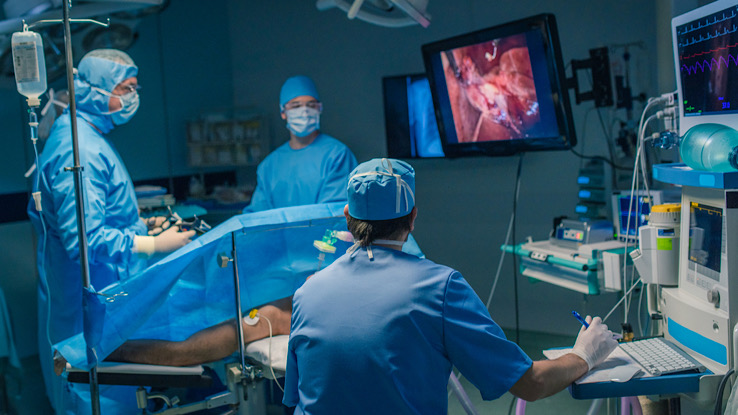
The most common arthroscopic surgery is arthroscopic knee surgery, which is minimally invasive. It utilizes an arthroscope (a narrow tube with a tiny camera), allowing the surgeon to examine and treat damage in the joint’s interior.
Arthroscopic knee surgery is associated with less scarring, shortened recovery time, and improved surgical success due to its minimally invasive nature. Although the recovery period from knee arthroscopy surgery varies between individuals, most can return to work within a week and resume a normal lifestyle within a few months.
What to Expect After the Surgery
Knee arthroscopy surgery lasts for approximately one hour. You may be discharged from the hospital once you are comfortable, take fluids orally, and walk on crutches. It is essential to have someone with you to take you home.
After the procedure, the doctor may put a bandage over the incisions to absorb some tissue drainage from the wounds. Your doctor will advise you on how and when to change these dressings. The bandage must be kept dry after surgery. Once you can stand comfortably for 10-to-15 minutes, you may be able to shower with a plastic bag over your dressing. Soaking your knee in a bath is not advised until the incisions fully heal.
Pain Medication and Swelling
Swelling around the knee is commonplace after arthroscopic knee surgery. It’s important to keep your knee elevated above your heart when lying down for the initial three days post-surgery. The swelling may last 7 to 15 days but should begin to subside 48 hours after the procedure. To help with the pain, your surgeon may prescribe pain medication, usually an analgesic with codeine. For mild pain or discomfort, over-the-counter NSAIDs like Tylenol or Advil may suffice.
Adjustments to Daily Life
Immediately after surgery, you should limit your daily activities and get plenty of rest. It is essential to bend and extend your knee as much as you can tolerate while maintaining your range of motion. Most people will not bear any weight on the afflicted knee and will need to use crutches. Your surgeon will assess and discuss with you when it is safe to put weight on your leg. Your doctor will consider many factors when deciding, including:
- Level of pain
- Whether you are still taking narcotic medication
- Ability to control the knee
- Nature of the procedure
Usually, you can resume driving 1 to 3 weeks after the procedure. You can generally return to work a week after the procedure and resume your daily activities within months. However, recovery time varies between individuals. Your surgeon will let you know when it is safe to return to work and increase your activity level.
Physical Therapy
Physical therapy is an essential component of your recovery from knee arthroscopy. It helps to:
- regain control of the leg muscles
- wean you from crutches
- regain full knee motion
- hasten your return to regular activity
Physical therapy should begin immediately following discharge from the hospital and initially focus on helping you regain balance and coordination. Once your knee is strong enough to bear some weight, the intensity of your physical therapy will increase. At this point, your physical therapy goals will be to regain full knee motion and continue strengthening the knee. How quickly one progresses through the physical therapy regimen will depend on the underlying cause of the knee problem.
Possible Complications
Overall, arthroscopic knee surgery has minimal risk and is associated with few complications. The occurrence and severity of complications may vary according to the extent of injury to your knee. The following complications may occur as a result of arthroscopic knee surgery.
Knee infection: There is a slight chance that some people will develop an infection in the knee. The infection can arise along the skin at the incision site or within the joint. People who develop infection symptoms, such as a fever, should immediately seek medical care.
Blood clots: Blood clots are a rare complication after arthroscopic knee surgery. Symptoms associated with blood clots include numbness or tingling. In some cases, blood clots can be life-threatening, so you must contact your doctor if you experience any of these symptoms.
Pooling of blood in the knee: In rare cases, some people may experience an accumulation of blood in the knee. If you are experiencing any of these symptoms, you should contact a doctor, and they will drain the excess blood.
Nerve or ligament damage: During surgery, the nerves, ligaments, or blood vessels within the knee can be injured. These complications are infrequent. Still, they may cause lasting knee damage. Symptoms associated with this sort of damage include unusual pain or tingling.
Resource Links:
- “Knee arthroscopy versus conservative management in patients with degenerative knee disease: a systematic review” via BMJ
- “Arthroscopic surgery for degenerative knee arthritis and meniscal tears: a clinical practice guideline” via British Journal of Sports Medicine
- “Does arthroscopic knee surgery work?” via Arthroscopy
- “Routine knee arthroscopic surgery for the painful knee in middle-aged and old patients—time to abandon ship” via Acta Orthopaedica
- “Minimally Invasive Orthopedic Surgery: Arthroscopy” via The Ochsner Journal
- “The role of arthroscopy in the management of knee osteoarthritis” via Best Practice & Research. Clinical Rheumatology
- “Role of Arthroscopic Surgery in Degenerative Knees with Mechanical Symptoms” via Indian Journal of Orthopaedics





